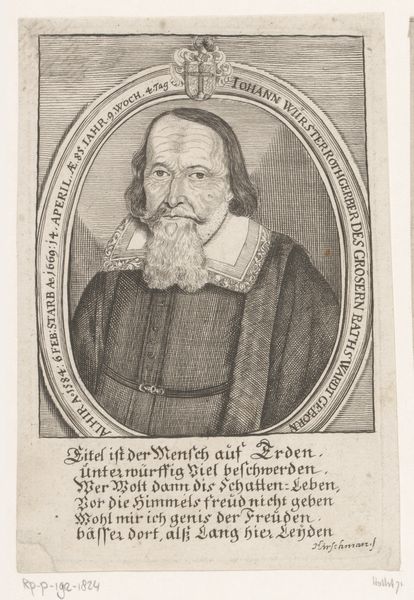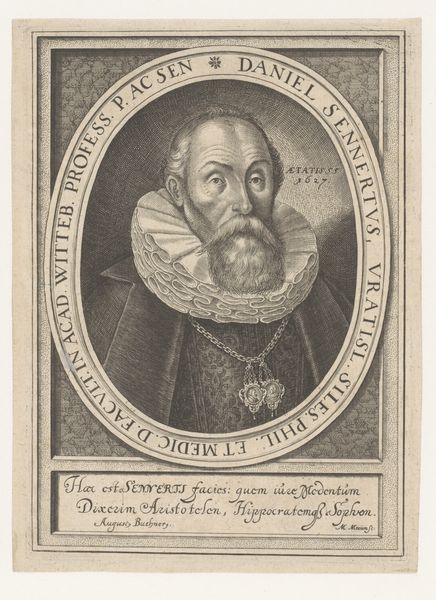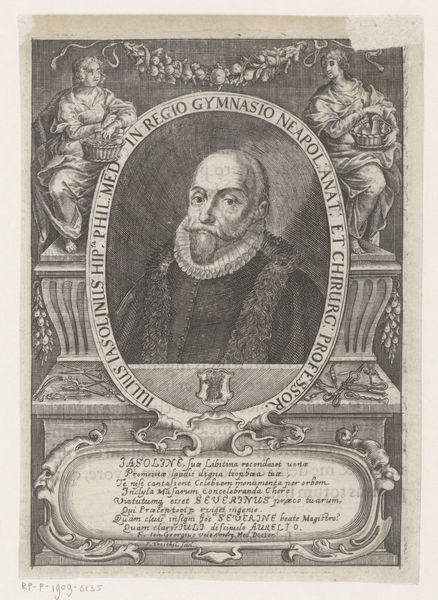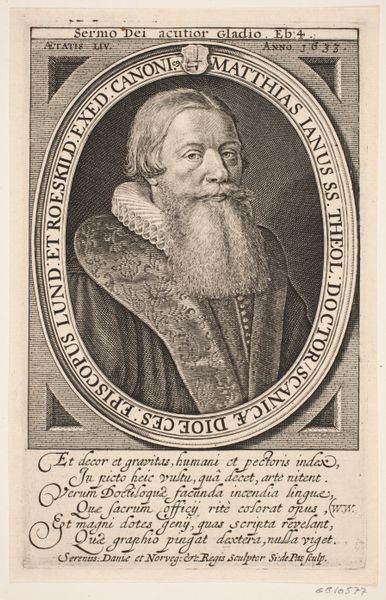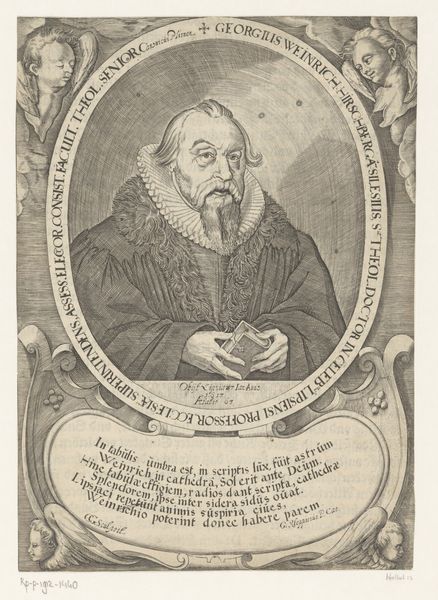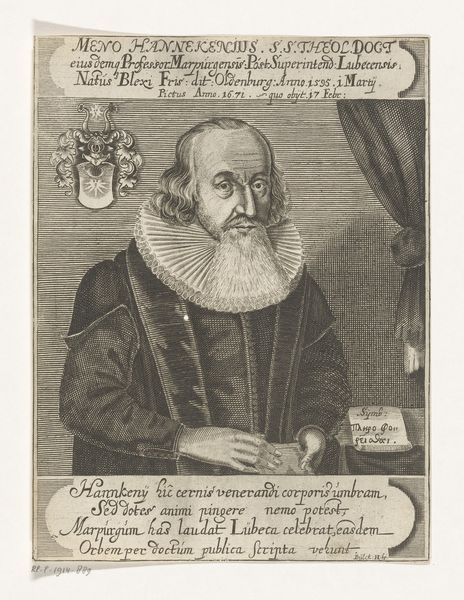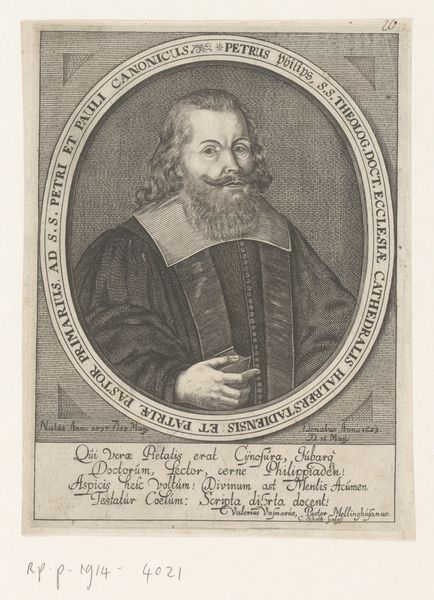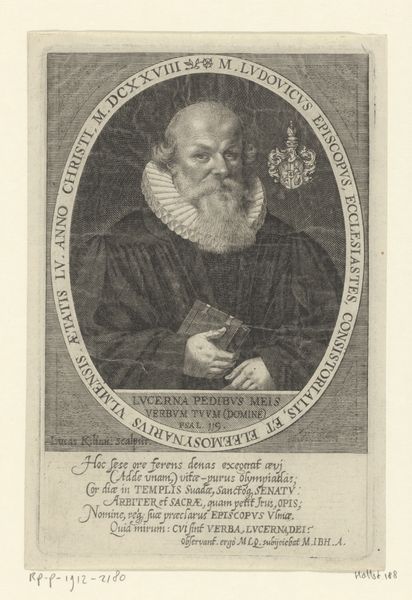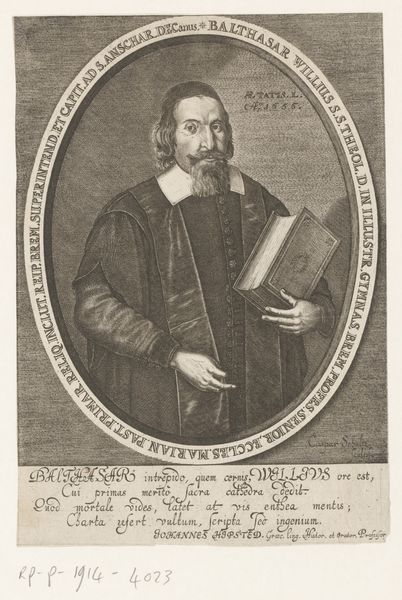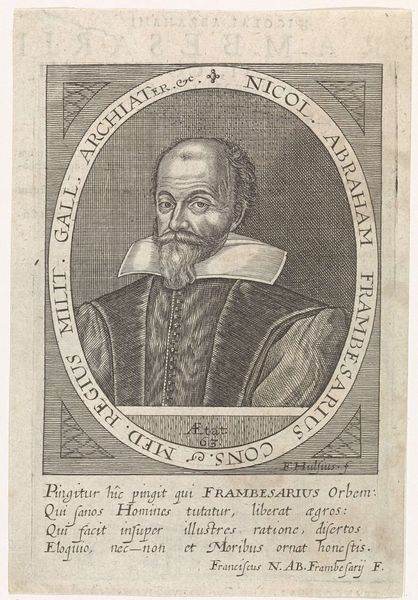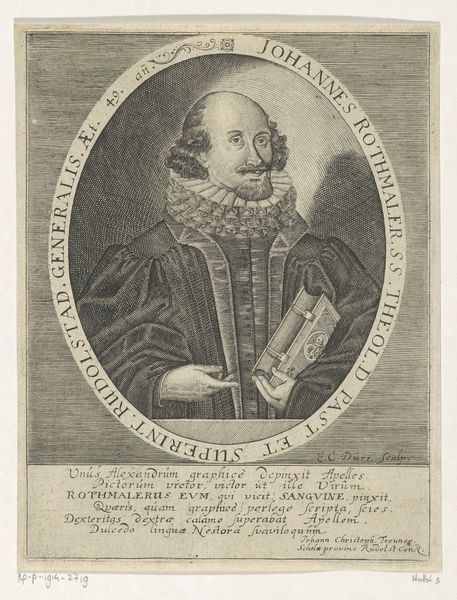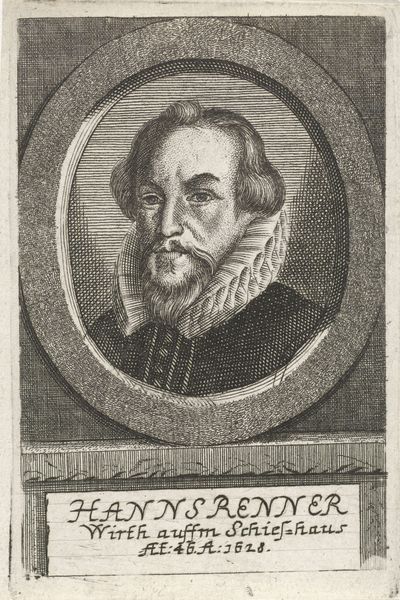
Dimensions: height 155 mm, width 113 mm
Copyright: Rijks Museum: Open Domain
Curator: This engraving presents a 17th-century portrait of Emericus Kebererus by Johann Sigismund Schlehenried. The work is meticulously crafted, showcasing the subject within a decorative oval frame, adorned with Latin text and evocative poetry below. Editor: Immediately, I'm struck by its starkness, even severity. The black and white print medium combined with the sitter's solemn expression projects a feeling of religious dedication mixed with the harsh realities of the time. There is a lack of warmth here, it feels more austere. Curator: The portrait adheres to the conventions of Baroque portraiture while infusing symbolic layers. The oval cartouche contains the identifying information of the subject as well as allusions to mortality. It would appear from the latin above Kebererus's head—'AETERNITAS CADUCA VANITAS' —eternity, fragile vanity— that the imagery acts as a vanitas. It draws the viewer's eyes upward. Editor: Considering the historical context, such a pronouncement about mortality might reflect the societal precarity caused by widespread disease. Portraits were reserved mostly for privileged elite, which further speaks to its exclusivity as an object and highlights the visual and literal textual messaging. Look at the verses at the bottom - "now, shine ye lights full before Gods face" are meant to convey ideas about eternal light and religious dedication, concepts highly connected to ideas around self and community. Curator: Yes, indeed. The book held by Kebererus is also quite significant. As suggested on its cover it might be a theological or philosophical work - which places him squarely in a learned tradition. His severe mien and defined attire further communicate ideas of religious piety. Editor: It’s interesting how the clothing and posture contribute to the construction of his identity as one devoted to religion and theology. In the visual language, this representation reinforces particular hierarchies of power and access to knowledge that excluded others, such as laypeople, women or marginalized groups, reinforcing societal stratification through images. Curator: Certainly. The artist masterfully employed printmaking techniques to present Kebererus not merely as an individual, but as a symbol of erudition and unwavering faith amidst life’s ephemerality. The cultural and spiritual weight embodied in his likeness speak of a deeply human impulse to make sense of an uncertain world. Editor: Looking closer allows one to see how the composition isn't just an aesthetic exercise, but functions as a strategic inscription of power and purpose, speaking to lasting socio-political orders rooted in theology and personhood. It encourages us to see beyond representation to examine how visuals construct power relations through the cultural figure in front of us.
Comments
No comments
Be the first to comment and join the conversation on the ultimate creative platform.
